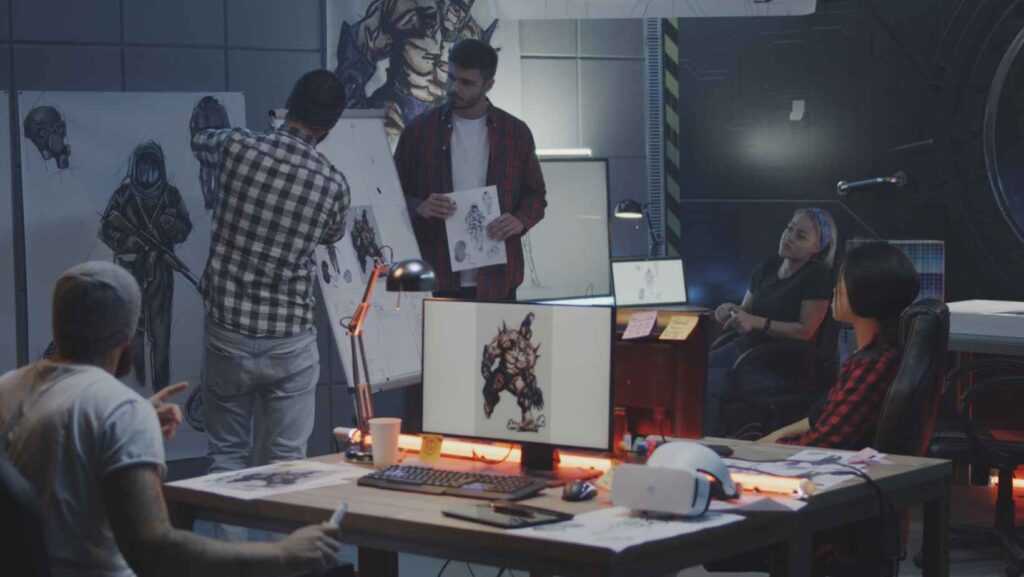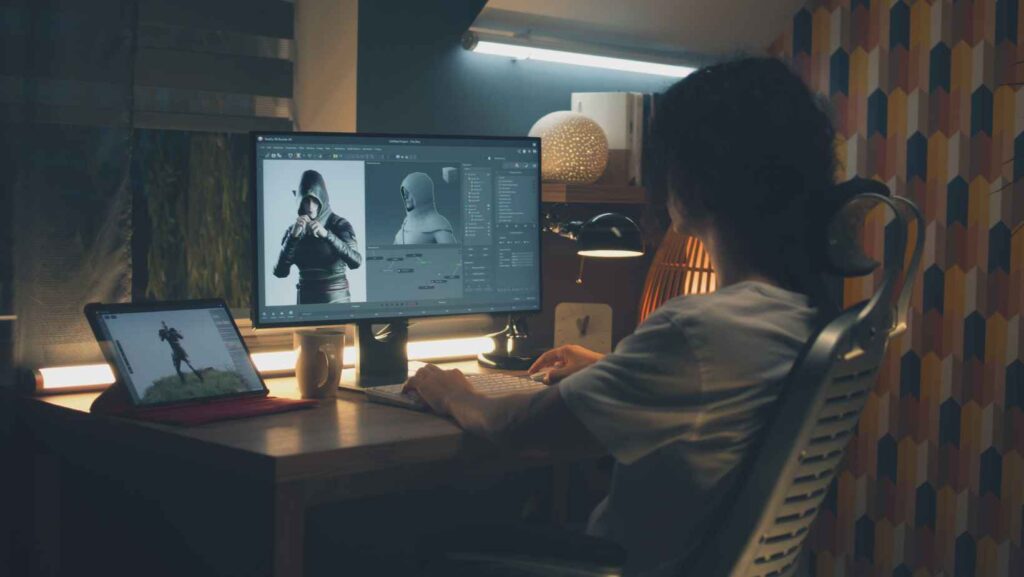In the vibrant world of game design, a unique blend of creativity, technical prowess, and storytelling ability is key. It’s an intricate dance of multiple skills, each one playing its part in crafting immersive and engaging experiences for gamers worldwide.
Stay tuned as we unravel the art and science behind game design.
Understanding Game Design
Unraveling the complex web of game design demands deconstructing the multifaceted skills involved in building captivating digital experiences. It’s an amalgam of proficiency stretching from artistic creation to algorithmic formulation.
Basics of Game Design
Delving into the fundamentals of game design, the creator, also known as a game designer, endeavors to orchestrate an interactive narrative using game mechanics, aesthetics, and story-line. The designer’s proficiency in software programming, animation, and graphic design constitutes the technical aspect of these skills.

Looking at the big picture, the essence of game design skills becomes evident as they play a vital role in influencing the success and profitability of the game. Design skills contribute to a seamless user interface, a compelling storyline, engaging game challenges, and exceptional graphics, roping in gamers and stimulating replayability.
Which Of These Skills Are Used In Game Design?
In the intriguing realm of game design, certain skills significantly influence the outcome. Here, four prime skills categorize which of these skills are used in game design.
Artistic Skills
Artisanal ability plays a significant role. Game designers create visual universes, engaging animations, and striking textures. They craft environments and characters, giving life to intangible concepts. For instance, honing skills in color theory, three-dimensional modeling, and digital sculpting helps in refining the visual appeal of games.
Computer Programming Skills
In game design, familiarity with programming forms the backbone. Ability to code, debug, and maneuver through different programming languages remains critical.
Specific languages often find favor in the industry, such as C++, Java, and Python. Programmers construct game mechanics, establish control interfaces, and carry out seamless game-flow development.
Critical Thinking Skills
Lastly, game designers employ robust critical thinking skills. They solve intricate problems, arrange logical sequences, strategize game playing mechanisms, and deal with unforeseen development challenges. For instance, deciding player-character dynamics, designing level intricacies, and balancing game difficulty require solution-oriented thinking and strategic foresight. Game designers, with critical thinking skills, ensure gamer satisfaction.
The Role of Artistic Skills in Game Design
Artistic skills hold a pivotal role in game design, constituting a large portion of the process. They contribute significantly to a game’s visual appeal, characters’ believability, and the overall immersive experience for players.
Graphic Design and Visual Artistry
In game design, one of these essential artistic skills is graphic design, coupled with visual artistry. Graphic design fosters stunning visual environments. It aids in shaping a game’s theme, style, and mood, all centered on enhancing player engagement. Graphic designers create everything from the game’s logo and menu interfaces to the texture of in-game objects for a cohesive look and feel.

Complementing graphic design, visual artistry breathes life into a game’s various elements. This skill involves detailed art styles, intricate design patterns, and color schemes. Visual artists ensure every aspect of the game, from characters, vehicles, to landscapes, are not only eye-catching but also resonate with the game’s overarching themes and narratives.
3D Modeling and Animation Skills
Another key artistic skill utilized in game design is 3D modeling and animation. This skill set shapes the game’s three-dimensional assets, such as characters, environments, and props. The fineness and authenticity of 3D models often distinguish top-tier games from their counterparts.
Animation skills, on the other hand, bestow characters and in-game elements with the illusion of movement and life. Animators provide fluid motions, realistic movements, and expressive facial animations to characters, enhancing their believability and amplifying players’ connect with the game world.
By employing artistic skills like graphic design, visual artistry, 3D modeling, and animation, game designers effectively translate their creative visions into captivating, engaging virtual worlds. The juicier a game’s visual feast, the greater its potential to captivate players and cultivate memorable gaming experiences.



